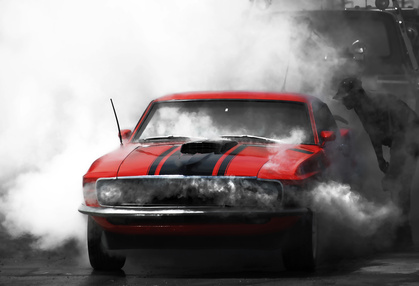
Barking, or squealing, your tires is a proclamation of your vehicle's power, or so it is perceived. However, even relatively low-powered vehicles can be made to bark. The noise it produces is created by the tires temporarily losing traction and sliding the rubber on the pavement. Friction, along with this rubbing motion, causes the squeal. As long as you can brake the tires loose, you can bark them. The driving surface is important as well. Smooth, flat surfaces tend to cause louder squeals. Dirt does not provide enough grip to allow squealing, although you can certainly kick up a dust storm. You also have two types of transmissions, manual and automatic, which will affect the technique you use.
Allow yourself plenty of room, as you may ultimately launch forward considerable distances.
Press the traction control button to turn off the traction control. Some cars require you to press the button for five seconds; others simply toggle. Consult your car's manual for precise instructions.
Press the clutch petal all the way to the floor and shift into first gear.
Press the accelerator until your RPMs are fairly high. Four thousand will probably work, but some cars will need considerably less. You will have to experiment to find the sweet spot.
Slide your left foot off the clutch petal to allow it to snap up on its own. This is called "popping" the clutch. Since the RPMs are high, you have more torque through the drive-train, which is more than the friction point of the tires can hold, so the wheels start squealing as you launch forward.
If you want to do a stationary burnout, jump on the brake quickly to keep from launching. Again, this is car-specific, so you will have to play with it to find the sweet spot. You can also press the accelerator even more to keep the tires broken loose.
Make certain there is nothing in front of you and turn off the traction control, just as before.
Press the brake petal or pull the emergency brake and shift the car into "Drive."
Press the accelerator until your RPMs are very high. You may not be able to get them quite as high as with a manual transmission, but you need them close, unless you have a fairly powerful car. The car will already want to lurch forward, but keep the brakes pressed.
Slip your foot off the brake petal, allowing it to snap up on its own. The car should launch forward with an audible squeal. If it doesn't, you may need more throttle before popping the brake.